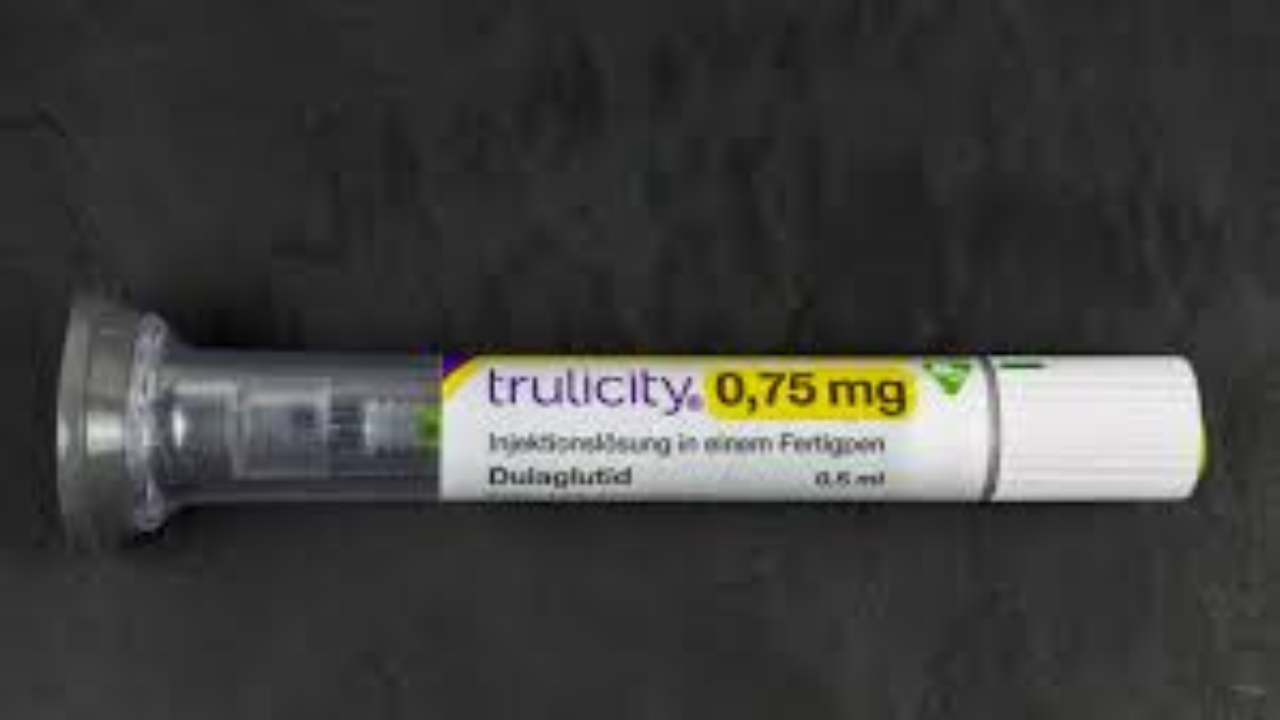Is Trulicity an insulin?
What is Trulicity used for?
Trulicity is a medication primarily used to help manage blood sugar levels in adults with type 2 diabetes. It belongs to a class of drugs called GLP-1 receptor agonists, which work by stimulating the body’s natural insulin production and reducing the amount of glucose produced by the liver. In addition to improving glycemic control, Trulicity may also help with weight management, as it can promote feelings of fullness and reduce calorie intake.
Furthermore, Trulicity is prescribed as an adjunct to diet and exercise to improve glycemic control in individuals with type 2 diabetes mellitus. It is not meant to be used to treat diabetic ketoacidosis or type 1 diabetes. Patients with a history of severe gastrointestinal disease, personal or family history of medullary thyroid carcinoma, or multiple endocrine neoplasia syndrome type 2 are cautioned against using Trulicity. It is important for individuals considering Trulicity to consult with their healthcare provider to determine if it is the right treatment option for their condition.
- Trulicity is primarily used to help manage blood sugar levels in adults with type 2 diabetes
- Comes from the class of drugs called GLP-1 receptor agonists.
- Stimulates the body’s natural insulin production and reduces glucose produced by the liver
- May aid in controlling weight by increasing feelings of fullness and consuming fewer calories.
How is Trulicity different from insulin?
Trulicity and insulin are both used in the management of diabetes, but they have different mechanisms of action in the body. Insulin is a hormone that facilitates the uptake of glucose by cells for energy, hence aiding in blood sugar regulation. It is often used in patients with type 1 diabetes or type 2 diabetes who cannot produce enough insulin on their own. On the other hand, Trulicity is a type of medication known as a GLP-1 receptor agonist, which works by stimulating the release of insulin from the pancreas when blood sugar levels are high.
There is also a difference in how Trulicity and insulin are administered. Insulin is typically injected under the skin using a syringe, pen, or pump, whereas Trulicity comes in the form of a pre-filled injection pen that is given subcutaneously once a week. This difference in dosing frequency and administration method may affect patient adherence to treatment regimens and convenience of use.
- Trulicity is a GLP-1 receptor agonist, while insulin is a hormone that regulates blood sugar levels
- Insulin is used in type 1 and type 2 diabetes patients who cannot produce enough insulin on their own
- When blood sugar levels are elevated, trulicity stimulates the pancreas to release insulin.
- Insulin is typically injected under the skin using a syringe, pen, or pump
- Trulicity comes in the form of a pre-filled injection pen that is given subcutaneously once a week
Can Trulicity be used instead of insulin?
Trulicity is a type of medication primarily used to help control blood sugar levels in individuals with type 2 diabetes. It belongs to a class of drugs known as GLP-1 receptor agonists, which work by stimulating the release of insulin and decreasing the production of glucagon in the body. This helps to regulate blood sugar levels and may also promote weight loss in some individuals.
While Trulicity can be an effective treatment option for many people with type 2 diabetes, it is not meant to replace insulin therapy in individuals with type 1 diabetes or those with severe insulin deficiency. Insulin plays a crucial role in managing blood sugar levels in these individuals, and Trulicity may not provide the same level of control. It is important for individuals considering Trulicity as a treatment option to consult with their healthcare provider to determine the most appropriate medication regimen for their specific needs.
- Trulicity is a medication used to control blood sugar levels in individuals with type 2 diabetes
- This drug belongs to the class of GLP-1 receptor agonists.
- Stimulates the release of insulin and decreases production of glucagon in the body
- Can help regulate blood sugar levels and promote weight loss in some individuals
While Trulicity can be effective for type 2 diabetes, it is not a replacement for insulin therapy:
- Not meant for individuals with type 1 diabetes or severe insulin deficiency
- Insulin plays a crucial role in managing blood sugar levels in these cases
- Trulicity may not provide the same level of control as insulin
It is important to consult with healthcare provider before considering Trulicity as a treatment option.
What are the benefits of using Trulicity over insulin?
Trulicity offers several advantages over insulin for managing diabetes. One key benefit is its convenient once-weekly dosing regimen, which can be more appealing to patients compared to daily insulin injections. This may lead to improved medication adherence and overall better glycemic control for individuals with diabetes.
Moreover, Trulicity is associated with less risk of hypoglycemia compared to insulin, making it a safer option for some patients. The lower risk of hypoglycemia can help individuals with diabetes maintain stable blood sugar levels without experiencing episodes of dangerously low blood sugar levels. This can contribute to a better quality of life and reduced anxiety about severe hypoglycemic events.
– Convenient once-weekly dosing regimen
– Improved medication adherence
– Better glycemic control
– Less risk of hypoglycemia compared to insulin
– Safer option for some patients
– Helps maintain stable blood sugar levels
– Reduced anxiety about severe hypoglycemic events
Are there any risks associated with using Trulicity instead of insulin?
Trulicity comes with a set of potential risks that individuals should be aware of if considering it as an alternative to insulin for diabetes management. One risk associated with using Trulicity is the possibility of gastrointestinal side effects such as nausea, vomiting, or diarrhea. These symptoms can be bothersome for some users and may impact the overall quality of life.
Moreover, another risk of using Trulicity is the potential for hypoglycemia, especially when combined with other diabetes medications that lower blood sugar levels. Hypoglycemia, or low blood sugar, can lead to symptoms such as dizziness, confusion, and even fainting in severe cases. It is crucial for individuals using Trulicity to monitor their blood sugar levels closely to reduce the risk of experiencing hypoglycemia.
- Adverse effects related to the digestive system, like nausea, vomiting, or diarrhea
- Impact on overall quality of life for some users
- Potential for hypoglycemia when combined with other diabetes medications
- Symptoms of hypoglycemia include dizziness, confusion, and fainting in severe cases
- Importance of monitoring blood sugar levels closely while using Trulicity
How should Trulicity be taken compared to insulin injections?
Trulicity is administered via a subcutaneous injection once a week, typically on the same day each week. The injection is usually done in the stomach area, thigh, or upper arm. To guarantee maximum efficacy, it’s critical to adhere to the dosage recommendations given by a medical professional.
On the other hand, insulin injections are often taken multiple times a day, depending on the individual’s insulin needs. The injection sites for insulin can vary, including the abdomen, thighs, buttocks, or arms. It is crucial to rotate injection sites to prevent skin problems and ensure proper insulin absorption.
- Trulicity is a once-a-week injection, while insulin injections are often taken multiple times a day.
- Trulicity is usually injected in the stomach area, thigh, or upper arm.
- Insulin injections can be administered in the abdomen, thighs, buttocks, or arms.
- It is important to follow dosage instructions for both Trulicity and insulin to ensure effectiveness.
- Rotating injection sites is crucial for proper absorption of insulin and to prevent skin issues.
What should one consider when deciding between Trulicity and insulin for diabetes management?
When deciding between Trulicity and insulin for managing diabetes, it is important to consider factors such as the individual’s lifestyle, preferences, and medical history. Trulicity is a once-weekly injectable medication that may offer convenience for some patients who prefer less frequent injections compared to daily insulin injections. On the other hand, insulin, whether administered through injections or pumps, remains a cornerstone treatment for diabetes and may be necessary for some individuals to achieve optimal blood sugar control.
Additionally, the cost considerations of Trulicity versus insulin should also be taken into account. Insulin can vary in price depending on the type and brand, while Trulicity is a newer medication that may be more expensive and not always covered by insurance plans. Patients should discuss with their healthcare provider the financial implications of both treatment options to ensure affordability and access to necessary medications for effective diabetes management.
- Lifestyle and preferences play a role in choosing between Trulicity and insulin
- Trulicity offers once-weekly injections for convenience
- Insulin is essential for optimal blood sugar control in some cases
- Cost considerations should be taken into account when deciding between Trulicity and insulin
- Insurance coverage may vary for Trulicity compared to insulin
FAQs About Trulicity
What is Trulicity used for?
Adults with type 2 diabetes can better control their blood sugar levels with the help of trulicity.
How does Trulicity work in the body?
Trulicity works by mimicking the action of a hormone called GLP-1, which helps to regulate blood sugar levels.
Is Trulicity a type of medication for diabetes?
Yes, Trulicity is a type of medication known as a GLP-1 receptor agonist used for diabetes management.
What are the side effects of Trulicity?
Symptoms of Trulicity frequently include nausea, diarrhea, and abdominal pain.It is important to consult a healthcare provider for a full list of potential side effects.
How is Trulicity different from insulin?
Trulicity is a medication that is taken by injection once a week, while insulin is a hormone that is typically taken by injection multiple times a day.
Can Trulicity be used instead of insulin?
In some cases, Trulicity can be used as an alternative to insulin for managing type 2 diabetes. Nonetheless, a healthcare professional should be consulted before making this choice.
What are the benefits of using Trulicity over insulin?
Some potential benefits of using Trulicity over insulin may include fewer injections, improved blood sugar control, and potential weight loss.
Are there any risks associated with using Trulicity instead of insulin?
Some potential risks of using Trulicity instead of insulin may include allergic reactions, pancreatitis, or kidney problems. It’s crucial to go over the advantages and disadvantages with a healthcare professional.
How should Trulicity be taken compared to insulin injections?
Trulicity is typically taken by injection once a week, while insulin injections are typically taken multiple times a day before meals.

